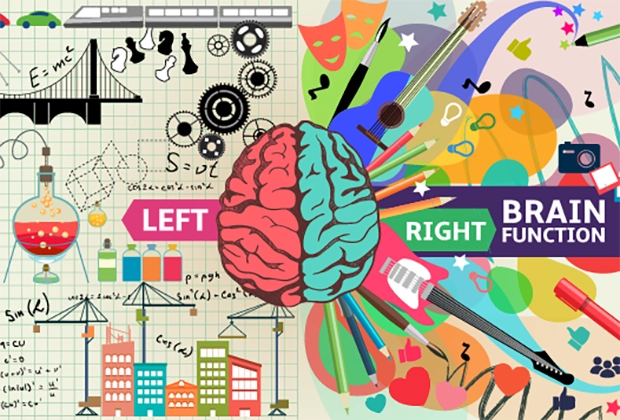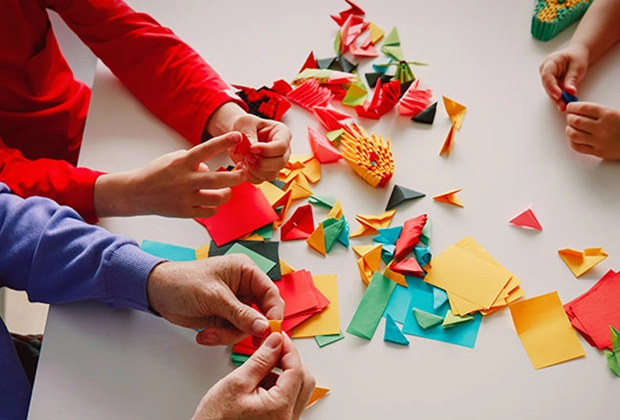A Deep Dive into the “A” in STEAM Education

How the Arts Supercharge STEAM Education
In today's rapidly evolving educational landscape, the STEAM education framework is steadily replacing the traditional STEM model to cultivate the innovative talents of the future. STEAM integrates Science, Technology, Engineering, the Arts, and Mathematics. The crucial "A" for Arts is the fundamental difference from STEM and the very soul of its philosophy.
What Does the "A" Mean in STEAM?
Many might think the "A" in STEAM simply refers to painting or music, but its scope is far broader. As defined by the STEAM framework, "The Arts" is a collective term for a range of creative and humanistic fields, which can be broken down into:
- Fine Arts: Primarily based on aesthetics, this includes traditional subjects like drawing, painting, sculpture, and photography.
- Language Arts: Centered around the use of language and communication, including native and foreign languages, sign language, and creative writing.
- Physical Arts: Focused on physical activity, such as dance and sports.
- Manual Arts: Centered on physical skills and the manipulation of objects, like architecture and landscape design.
- Liberal Arts: The broadest category, covering humanistic subjects like philosophy, ethics, sociology, history, and political science.
The inclusion of the Arts infuses the traditionally rigorous STEM disciplines with a human touch and creative energy.

STEM vs STEAM
Why Is Art So Important? Cultivating Future-Ready Core Skills
Integrating the arts into STEAM education isn't just a decorative addition; it’s about fostering a comprehensive set of core skills essential for the future. The arts teach the value of creativity, innovative thinking, effective communication, and deep contemplation. Furthermore, they greatly enhance an individual's appreciation for diverse cultures.
Skills developed through the arts are highly sought after in today's workforce. Whether it's finding creative solutions to complex problems or using diverse perspectives to break a stalemate, individuals with an arts background consistently bring valuable insights. The core appeal of successful tech products often lies not in the technology itself, but in the perfect marriage of technology and the humanities. This fusion is what creates truly moving experiences and perfectly illustrates the essence of STEAM—that the union of technology and the arts yields the greatest results.
The Magic of Visual Art: Insights from VA-STEAM
Among the many art forms, Visual Art (VA) stands out as humanity's earliest form of expression, making it an excellent entry point for integrating the arts with STEM subjects. This specialized approach within STEAM education, known as VA-STEAM, not only makes learning more engaging but also offers profound cognitive benefits.
It significantly enhances a student's "intelligence of seeing," training them through drawing and observation to notice details, patterns, and structures that might otherwise be overlooked. Artistic creation, especially drawing, has been proven to strengthen memory by engaging both kinesthetic movement and creative encoding, making knowledge stick. Visual expression also aids in causal reasoning, helping students grasp abstract scientific concepts that are difficult to explain with words alone.

Art helps children grow better
Cross-Curricular Teaching Examples:
Applying these principles to STEAM education can lead to many innovative activities:
- Math & Geometry: Students can use the Pythagorean theorem and precise calculations to draw a vibrant "Spiral of Theodorus" or intuitively understand symmetry by making inkblot art on t-shirts.
- Physics: Abstract concepts like density become tangible through a "colored water layering" experiment, while magnetic forces can be felt and seen by building magnetic sculptures.
- Biology: The microscopic world comes to life when students build a DNA double helix model from candy and toothpicks or create a colorful bacteria model from clay.
- Chemistry: "Chromatography butterflies" allow students to understand the principle of separating mixtures while creating beautiful crafts.
- History: Students can develop a deeper connection to the past by creating crafts inspired by ancient civilizations or by collecting and comparing photographs of historical architecture.
These activities, based on Project-Based Learning (PBL) and Design-Based Learning (DBL), empower students to not only learn by doing but also to naturally integrate and apply knowledge from multiple disciplines in the process of creation.
From Idea to Creation: Sparking STEAM with Coding Kits
When STEAM principles move from theory to practice, especially through DBL and PBL, the right tools can amplify creativity. In the digital age, coding has become a new form of "art" itself, allowing students to merge logic, design, and creativity into tangible, interactive works.
This is where coding kits for kids show their value. They are more than just tools for learning code; they are perfect vehicles for bringing STEAM education to life. Many excellent starter kits guide children in turning their abstract ideas into reality.
- For beginners, kits with graphical block-based programming allow them to build programs like LEGOs, getting instant feedback on a screen and building confidence through that "first code, first success" experience.
- For kids ready for the next level, kits that connect to multiple modules and use real code encourage them to think like an engineer, solving real-world problems like designing an automatic plant-watering system.
- For those fascinated by modern tech, kits with full-color touchscreens and cool RGB light strips blend programming with visual art. Kids can design their own game interfaces or create light shows that sync to music—a brilliant performance of technology and art in action.
Brands like Elecrow are embedding these advanced STEAM principles into their product design, offering a wide range of coding kits for kids that empower them to bring their creative ideas to life. Choosing such a tool is more than just buying a toy. You are investing in a new way of thinking for your child—the ability to face a problem, deconstruct it, and bring their own solution to life.
From Tools to a Higher Way of Thinking
At its core, STEAM education recognizes the vital role of the arts in developing well-rounded individuals. It’s not just an add-on to STEM; it's a catalyst that fuses rigorous scientific logic with boundless creative imagination. From classroom handicrafts to coding kits on a desk, the arts are helping learners develop the creativity, ingenuity, and communication skills needed to excel in the world of tomorrow. This isn't just an educational reform; it's a profound investment in the innovators of the future.
